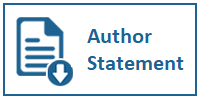Adapting Stage Play to Virtual Reality Comics
DOI:
https://doi.org/10.31937/ultimart.v16i2.3431Abstract
The digital revolution has given rise to hybrid mediums and a digital culture constructed through new communication technologies. This has created opportunities for sequential storytelling to expand from its conventional form towards immersive mediums. Comics, conventionally developed in codex book form, are currently experimenting with new media tools, where screens often replace pages. This phenomenon is considered the meta-panel, which has the flexibility to take any form, shape, or size. Virtual reality comics can immerse viewers in unique ways such as immersion in a 360-degree space, ambisonic sound, motion, and interaction with the content. Studies suggest that cinematic virtual reality and stage plays have several similarities, such as long takes, exaggeration in performance, and the viewers being located at a considerable distance from the performance. Therefore, designing for virtual reality can benefit from stage methods. This study experiments with the adaptation of theatrical storytelling into comics. This paper adopts a practice-based research method to develop a virtual reality comic, The Great Golden Gang. This paper includes a discussion on the design process for developing such a virtual reality comic. To test the engagement of the virtual reality comic, Chapter One was previewed by selected participants using head-mounted displays. A participant survey demonstrates the viewer's readiness for virtual reality comics and suggests the potential of hybrid mediums of a stage play, comics, and virtual reality. The Great Golden Gang is an example of the meta-panel and highlights the potential of virtual reality to contribute to new ways of experiencing the stage and comics.
Keywords: stay-play adaptation; virtual reality; immersive comics; visual narrative
Downloads
Published
How to Cite
Issue
Section
License
Authors retain copyright and grant the journal right of first publication with the work simultaneously licensed under a Creative Commons Attribution-ShareAlike International License (CC-BY-SA 4.0) that allows others to share the work with an acknowledgement of the work's authorship and initial publication in this journal.
Authors are able to enter into separate, additional contractual arrangements for the non-exclusive distribution of the journal's published version of the work (e.g., post it to an institutional repository or publish it in a book), with an acknowledgement of its initial publication in this journal.
Copyright without Restrictions
The journal permits the author(s) to hold the copyright without restrictions and will hold distributing rights without limitations.
The submitted papers are assumed to contain no proprietary material unprotected by patent or patent application; responsibility for technical content and for protection of proprietary material rests solely with the author(s) and their organizations and is not the responsibility of the Ultimart: Jurnal Komunikasi Visual or its Editorial Staff. The main (first/corresponding) author is responsible for ensuring that the article has been seen and approved by all the other authors. It is the responsibility of the author to obtain all necessary copyright release permissions for the use of any copyrighted materials in the manuscript prior to the submission.















